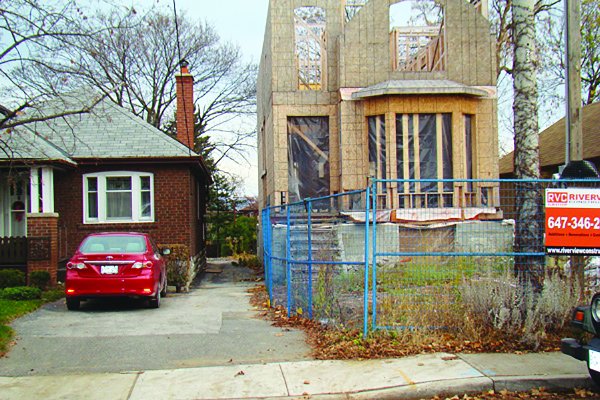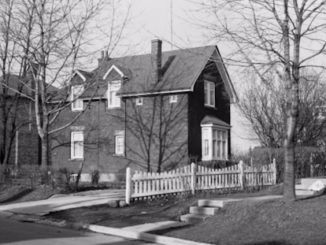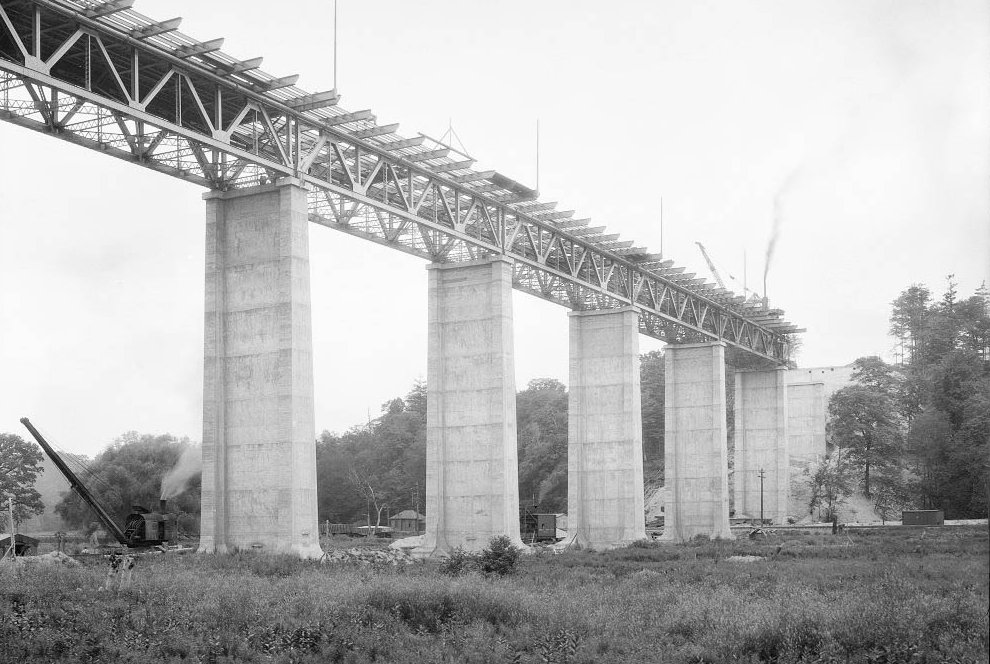
On October 29 raise a glass to celebrate the Leaside Viaduct as it enters its 10th decade.
Built in 1927, the Leaside Viaduct (aka Millwood or Leaside bridge) over the Don Valley was a game changer for the Town of Leaside. The bridge drastically improved access from the south and east to the community and stimulated a building boom in the 1930s that continued into the ’40s. The impressive structure, which has since been widened to accommodate more vehicles, tends to be overlooked in favour of its more famous cousin to the south, the Prince Edward Viaduct (Bloor St.).
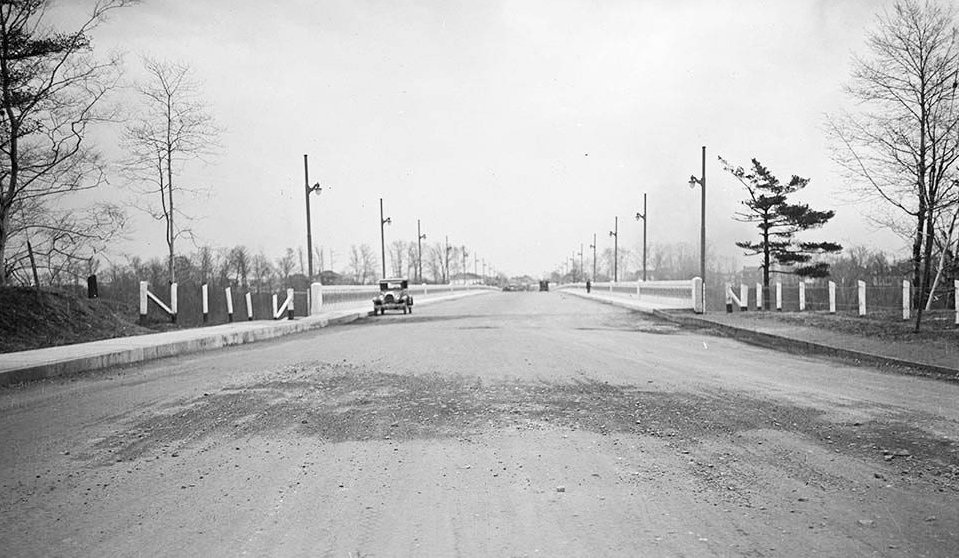
The simple, utilitarian superstructure and basic concrete piers were built in record time using construction techniques never before seen in Canada. It took barely 10 months to connect the top of Pape Ave. with the burgeoning community of Leaside and its thrumming racetrack.
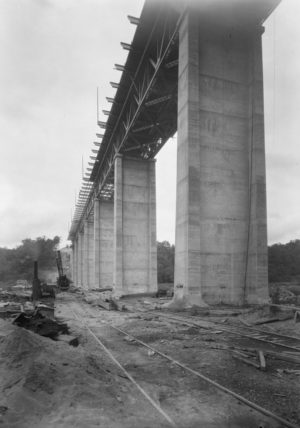 By comparison, the Bloor Viaduct, featured as the central location for the popular novel In the Skin of a Lion, took almost five times as long to build.
By comparison, the Bloor Viaduct, featured as the central location for the popular novel In the Skin of a Lion, took almost five times as long to build.
The need for a second bridge to span the Don Valley became apparent in the late 1920s as Leaside, the community planned by Frederick Gage Todd for the Canadian Northern Railway, was laid out, but the predicted population growth was slow to materialize.
In 1927, more than 15 years after its creation, the Toronto Star was still predicting that Leaside would become “in the near future a thriving town of 25,000 population, not the product of a hysterical real estate boom, but the natural corollary of civic development.”
Construction began in earnest on Jan. 2, 1927, a few weeks after the official groundbreaking on Dec. 13, 1926. The earth on the south side of the valley was already frozen in an unyielding mass, so a fire was burned over the ceremonial first patch of sod, which was turned by Township of East York Reeve Robert Henry McGregor using a miniature silver shovel.
The construction schedule was ambitious. Designer and lead engineer Frank Barber pledged to deliver the $150,000 concrete and steel structure, substantially different from the one initially approved by the local councils, within a year – an unprecedented time frame.
Several new innovations made the goal achievable. Barber and his team would measure the dry ingredients for the concrete supports by weight, reducing waste, while the steel superstructure would be built between the concrete piers without scaffolds or temporary supports, borrowing a system used during construction of the Quebec Bridge.
Barber’s teams worked 24 hours January to March through bitter cold, wind, and snow. Massive searchlights on the valley floor bathed the gigantic structure in brilliant light after dark. An average four metres of concrete were laid every four hours, contractors Roger Miller and Sons told the papers.
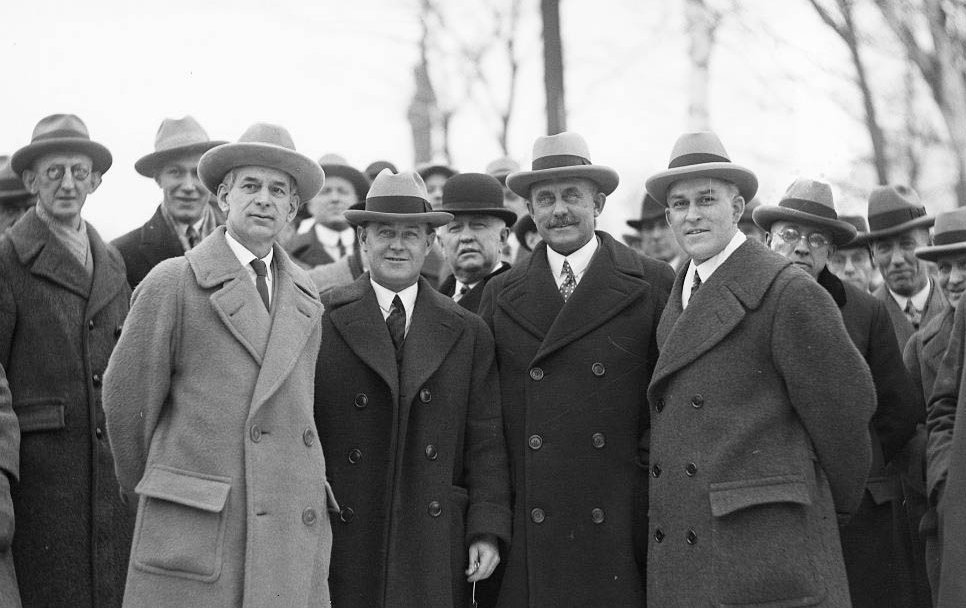
The extreme haste had consequences. Three men died while working on the bridge, but Barber believed a few mishaps were to be expected. With few setbacks (apart from the occasional low-profile personal tragedy), the Leaside Viaduct was complete by late October 1927, barely 10 months after the groundbreaking ceremony. The speed of construction set a world record and the final bill came in slightly over budget at $975,000 – about $13 million in today’s money.
The Star called the 427-metre long structure “one of the greatest links that has been forged for the development of the Queen City and suburbs in the last score of years.” Leaside and East York decided to name the span, decorated with few architectural flourishes, Confederation Viaduct, 60 years after the founding of Canada.
At exactly 3p.m. on Oct. 29, 1927, Ontario Lieutenant Governor William Donald Ross cut the ribbon strung across the entrance to the south side of the bridge using a pair of specially engraved scissors. The band of the Mississauga Horse played God Save the King and a score of dignitaries gave speeches.
The first vehicles to cross the concrete surface were a TTC bus, the first on the new Pape route, and a bread wagon bound for Leaside. The deck was widened to support six lanes of vehicle traffic in 1969 as the city mulled extending Leslie St. south across the bridge. A major facelift and heritage status arrived in 2004.
Acknowledgement: This piece draws on one by Chris Bateman, staff writer at blogTO.




